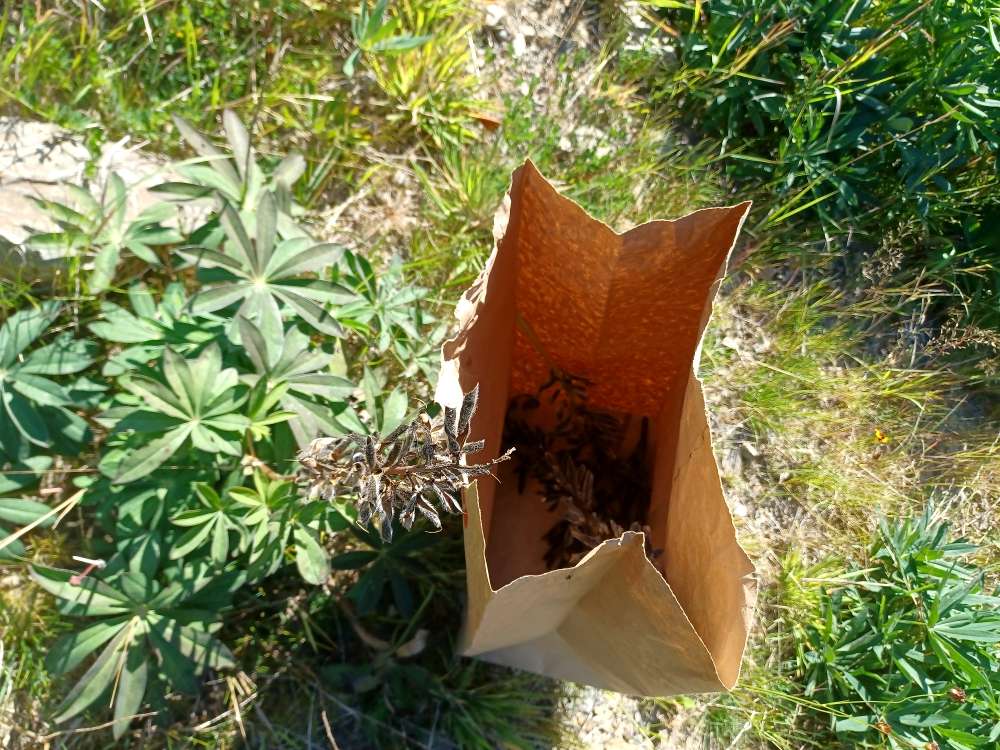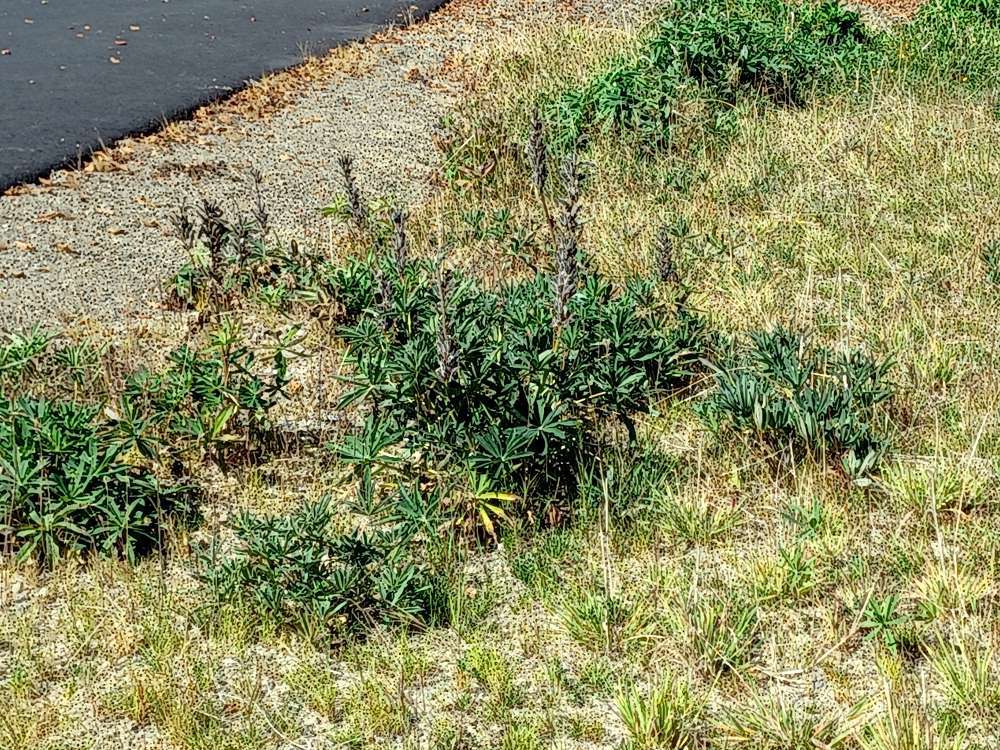
Last week I spent some time picking lupine seeds at Willapa National Wildlife Refuge. For the past few years I’ve volunteered extensively with the Friends of Willapa NWR in capacities ranging from trails manager to volunteer coordinator to Junior Duck Stamp program manager, and then some. This time it was an email asking if I would be willing to pick the lupine seeds before the pods burst open, on behalf the volunteer in charge of planning out native plants at the new headquarters (who was unable to get to them in time.)
So I headed over to the parking lot downhill from the headquarters, and slowly wandered through the clumps of Lupinus polyphyllus, the big-leaved lupine, snipping off thick, dry stems of seed heads and placing them upside-down in paper grocery bags. Lupinus polyphyllus var. polyphyllus is the subspecies native to the Pacific coastline, though because so much of our native meadow habitat here in southwest Washington has been destroyed for farmland over the last century and a half you’re much less likely to see it than its smaller cousin the seashore lupine (Lupinus littoralis). These were only recently planted as part of habitat restoration in the wake of the headquarters’ construction, and within sight of the restored Bear River Estuary. Still, by the number of heavy seed pods I collected, it was evident that the adult pollinators were happy with the flowers earlier in the year. I didn’t see as much insect predation on the leaves as I might have expected, but perhaps the local invertebrates don’t find lupines to their liking.

Or maybe they haven’t discovered these newly reintroduced natives just yet. After all, when a plant is extirpated from a place, all the chains of connection attached to it collapse. Species that are dependent on it may move to different areas, rely more heavily on other plants, or even go locally extinct. Contrary to popular belief, herbivorous insects cannot just eat any plant they like. Because every plant contains a unique set of chemical compounds, many of these herbivores have evolved to only eat a narrow range, often only within the same genus or family. A few are dependent on only one species. If they were to try to eat an entirely different plant, they would get sick and potentially die, just as we might get sick from trying to eat lupine leaves ourselves. (Incidentally, this is why the most common predators of non-native garden plants are themselves also non-native insects and other invertebrates!)
Within less than an hour I had collected two grocery bags brimming with lupine seed heads. In those two humble brown bags wait hundreds–perhaps thousands–of tiny promises of new life. Later in the fall a group of volunteers will get together to pull out the seeds and plant them in small containers of soil so that, with luck and care, they’ll germinate next spring. Those that thrive will then be planted in open areas around the Refuge to help increase the presence of this native species, and take away space from invasive plants. Since lupines are members of the pea family, they’ll also work their wonderful nitrogen-fixing magic–which isn’t magic at all, of course, but the simple process of drawing nitrogen from the air and storing it in the soil, to the benefit of all. This can only help with re-establishing native plant communities as time goes on.
I look forward to watching these seeds grow.
Further Reading:
https://www.nrcs.usda.gov/Internet/FSE_PLANTMATERIALS/publications/orpmcpg11723.pdf
Tallamy, Douglas W. (2009). Bringing Nature Home: How You Can Sustain Wildlife with Native Plants. Portland: Timber Press
